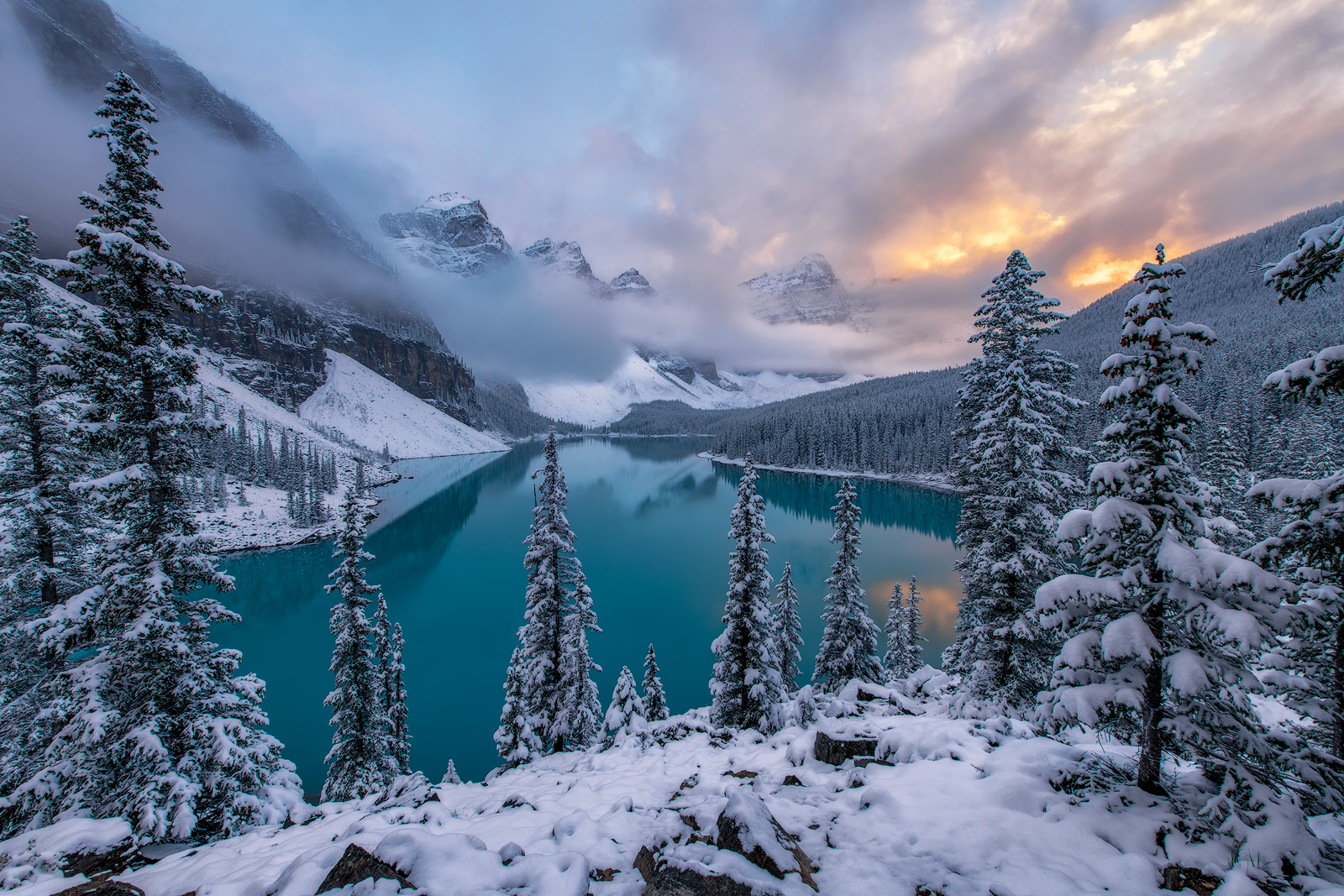shilohcreekkennels.com – Winter landscapes are a photographer’s dream, offering a unique and serene beauty that is unmatched by any other season. The stark contrasts, the softness of the snow, and the quiet stillness of the world under a blanket of white create an environment that is both challenging and rewarding to capture on camera. In this article, we will explore the enchanting allure of winter landscapes and why they present such a captivating subject for photography enthusiasts.
The Unique Light of Winter
One of the most striking features of winter photography is the quality of light. The low sun casts long shadows and creates a golden hue during sunrise and sunset, known as the “golden hours.” This warm light contrasts beautifully with the cool tones of the snow, resulting in images that are rich in color and depth. Additionally, the clear skies and crisp air often lead to high contrast scenes, where the details of the landscape are sharply defined.
The Softness of Snow
Snow acts as a natural diffuser, softening the light and creating a gentle, even illumination across the landscape. This can lead to ethereal images where the snow seems to glow from within. The texture of the snow can also add interest to a scene, from the smooth expanse of freshly fallen snow to the intricate patterns of snowflakes on branches and the roughness of ice formations.
The Silence and Stillness
Winter landscapes are often characterized by a profound silence and stillness. This tranquility can be felt through the lens, as the absence of wind and the hush of falling snow create a sense of peace in the images. The lack of foliage and the dormancy of many animals mean that the landscape is simplified, allowing the photographer to focus on the essential elements of the scene.
The Challenge of Cold Weather Photography
Capturing the beauty of winter landscapes comes with its own set of challenges. Extreme cold can affect both the photographer and the equipment. Batteries drain faster in the cold, and cameras can be more prone to condensation when brought from a warm environment into the cold. Photographers must dress in layers to stay warm and protect their gear to ensure it continues to function properly.
The Rewards of Winter Photography
Despite the challenges, the rewards of winter photography are immense. The unique conditions of the season offer the opportunity to capture scenes that are impossible to replicate at other times of the year. The stark beauty of a snow-covered landscape, the play of light on ice, and the solitude of a winter morning are all experiences that can be preserved through photography.
Tips for Capturing Winter Landscapes
- Use a Neutral Density Filter: To balance the bright snow and the darker shadows, a neutral density filter can help to even out the exposure.
- Shoot in RAW: Capturing images in RAW format allows for greater flexibility when editing, especially when it comes to recovering details in the highlights and shadows.
- Look for Patterns and Textures: Winter landscapes often reveal interesting patterns and textures that can add depth to your images, such as the tracks left by animals in the snow.
- Embrace the Blue Hour: Just after sunset, the “blue hour” can create a magical atmosphere, with the blue light of twilight casting a dreamy glow over the landscape.
Conclusion
Winter landscapes offer a unique and captivating subject for photography. The combination of the season’s light, the softness of the snow, and the serene stillness creates an environment that is both challenging and rewarding to photograph. For those willing to brave the cold and the technical challenges that winter photography presents, the rewards are images that capture the ephemeral beauty of a world transformed by snow and ice. Whether you’re a seasoned professional or an enthusiastic amateur, the winter landscape awaits, ready to reveal its secrets to your lens.
